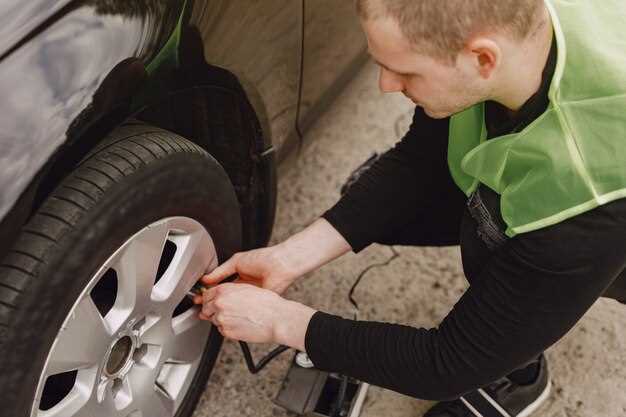
In the world of motorsports, tire performance can significantly impact a vehicle’s overall performance on the track. Understanding tire warmers is essential for any serious racer or motorsport enthusiast. These specialized devices are designed to heat tires to optimal operating temperatures before they hit the track, ultimately enhancing grip and reducing the likelihood of tire-related issues.
Tire warmers work by evenly distributing heat across the tire surface, ensuring that they reach the necessary temperature range that allows for maximum adhesion. This pre-heating process is crucial, as cold tires can lead to decreased traction, longer lap times, and even increased wear. For competitive racing, where every millisecond counts, having tires that are ready to perform is not just beneficial but essential.
Many racers may wonder if tire warmers are a necessary investment. The answer largely depends on the type of racing discipline, weather conditions, and personal performance goals. In some series, tire warmers are mandatory, while in others, they are optional but can provide a decisive advantage. Understanding the role of tire warmers can ultimately help racers make informed decisions regarding their setup and strategy.
In this article, we will explore the functionality of tire warmers, their benefits, and whether they are an essential component for your racing experience. From amateur enthusiasts to professional drivers, knowing the ins and outs of tire warmers can influence race day performance and contribute to an overall successful outing on the track.
Tire Warmers Explained: Do You Need Them for Racing?
Tire warmers are vital tools in the world of motorsport, specifically designed to heat tires to optimal operating temperatures before the onset of racing. This preparation significantly enhances traction, grip, and overall performance on the track. Cold tires lead to reduced performance, influencing the vehicle’s handling and increasing the risk of accidents.
One primary advantage of using tire warmers is the shortened time it takes for drivers to reach competing speeds. When tires are cold, they typically operate below their ideal temperature range, which can hinder performance and increase lap times. By preheating the tires, drivers can achieve maximum grip immediately after leaving the pit, allowing for faster and more consistent laps right from the start.
Moreover, tire warmers help in maintaining tire temperature during breaks in racing, such as during yellow flags or pit stops. Consistent tire temperature ensures that the tire rubber remains pliable, which is essential for effective tire operation and wear management throughout the race.
While tire warmers offer significant benefits, their necessity can vary based on racing types and conditions. In professional settings such as Formula 1 or MotoGP, tire warmers are often mandatory due to the extreme performance requirements. However, in amateur or club racing events, some drivers may choose to race without them, especially if ambient temperatures are suitable or if the racing format allows for rapid warming during competition.
In conclusion, while tire warmers are not strictly essential for all types of racing, their advantages in performance and safety make them a worthwhile investment for those serious about competing. Assessing the specific requirements of your racing environment will help determine whether tire warmers are necessary for your setup.
Understanding the Benefits of Tire Warmers in Racing

Tire warmers play a crucial role in motorsport, particularly in racing events where performance and grip are paramount. Here are the main benefits of using tire warmers:
- Optimal Tire Temperature: Tire warmers help maintain tires at their ideal operating temperature before the race. This is essential as tires generally perform better when they are warm.
- Improved Grip: Warm tires provide significantly better grip on the track. This enhances the vehicle’s handling and allows drivers to achieve faster lap times.
- Consistent Performance: Maintaining a consistent tire temperature helps ensure uniform performance throughout the race. Drivers can rely on predictable feedback from their tires, which is critical for successful cornering and acceleration.
- Reduced Wear: Using tire warmers minimizes early-stage tire wear. Starting a race with warm tires reduces the likelihood of excessive slipping, which can lead to premature degradation.
- Enhanced Safety: Warm tires reduce the risk of losing traction at the start of a race. This is vital for safety, especially in competitive environments where every fraction of a second counts.
- Faster Start: Drivers can accelerate more quickly from the starting grid with warm tires. This advantage can be crucial during the initial moments of a race when positions can be gained or lost.
In conclusion, tire warmers are an essential tool in racing, providing advantages that can directly impact performance, safety, and race outcomes. Understanding their benefits allows teams to make informed decisions on their use, ultimately enhancing their competitive edge.
How to Choose the Right Tire Warmers for Your Vehicle
Selecting the appropriate tire warmers for your vehicle involves several key considerations to ensure optimal performance. First, assess the size of your tires. Tire warmers come in various sizes designed to fit specific tire dimensions. Always verify compatibility with your tire specifications before making a purchase.
Next, consider the type of racing you participate in. Different motorsport disciplines, from track racing to dirt racing, may require specific warming temperatures and materials. Research the recommended temperature ranges for your racing category to determine what tire warmers can meet those needs.
Another important factor is the wattage of the tire warmers. Higher wattage models can heat tires more quickly, which is beneficial for time-sensitive situations. However, higher wattage also means increased power consumption; ensure your vehicle’s electrical system can handle the load.
Additionally, look for tire warmers with adjustable temperature settings. This feature allows you to customize the heat according to tire type and weather conditions. Some models include built-in thermostats for precise temperature regulation, which can prevent overheating and extend the life of your tires.
Don’t overlook the construction quality and material of the tire warmers. Look for durable, heat-resistant materials that provide even heat distribution. The presence of reinforced seams and reliable fasteners can enhance the longevity and effectiveness of the warmers.
Consider your budget when narrowing down your options. Tire warmers can vary significantly in price, so it’s essential to find a balance between cost and quality. Investing in a reputable brand with positive reviews can often provide peace of mind.
Finally, explore additional features that may enhance usability, such as easy storage solutions, carry bags, or digital displays for temperature monitoring. These conveniences can make a significant difference in your overall experience when using tire warmers.
Best Practices for Using Tire Warmers Before a Race

Using tire warmers effectively can significantly enhance your racing performance by ensuring optimal tire temperature and grip. Here are some best practices to follow before a race:
1. Select the Right Temperature Setting: Most tire warmers come with adjustable temperature settings. Refer to your tire manufacturer’s specifications to determine the ideal temperature range for your specific tire model. Setting the appropriate temperature ensures that the tires reach their optimum performance level.
2. Preheat Tires Before Installation: Always warm the tires before mounting them on the vehicle. This method allows for an even and consistent heat distribution, reducing the risk of cold spots when the tires are first used on track.
3. Use Tire Warmers in a Controlled Environment: To achieve the best results, place the tire warmers in a clean, dry area away from direct sunlight and moisture. This ensures they function properly without external temperature fluctuations affecting their performance.
4. Extend Heating Time for Larger Tires: Larger tires or those with heavier compounds require longer warming times. Plan ahead and allow extra time for your tire warmers, so the tires are fully heated before you go to the grid.
5. Monitor Tire Temperature: Many advanced tire warmers come with built-in thermometers or temperature monitoring systems. Use these features to track the tire temperature throughout the heating process, ensuring they stay within the desired range.
6. Check for Even Heating: After removing the tire warmers, inspect the surface of the tires for even heating. Uneven heating can indicate a malfunction in the tire warmer or improper placement. Adjust the positioning or settings as necessary to ensure uniform warmth.
7. Implement Gradual Temperature Changes: If you experience significant temperature differences due to various track conditions, consider gradually introducing the tires to different temperature ranges during practice sessions. This helps the tires adapt and maintains their performance without compromising their integrity.
8. Utilize Tire Warmers During Long Breaks: If there are extended pauses in the racing schedule, regularly reapply the tire warmers to keep the tires within the optimal temperature range. This practice helps maintain grip and performance when you return to the track.
9. Follow Manufacturer Instructions: Adhere strictly to the manufacturer’s guidelines for usage, maintenance, and care for your tire warmers. Proper usage not only extends the lifespan of the warmers but also ensures your tires receive the best possible treatment prior to racing.
By implementing these best practices, you can maximize tire performance and, ultimately, your competitive edge when racing. Consistent and careful management of tire warmers contributes to improved lap times and overall race success.